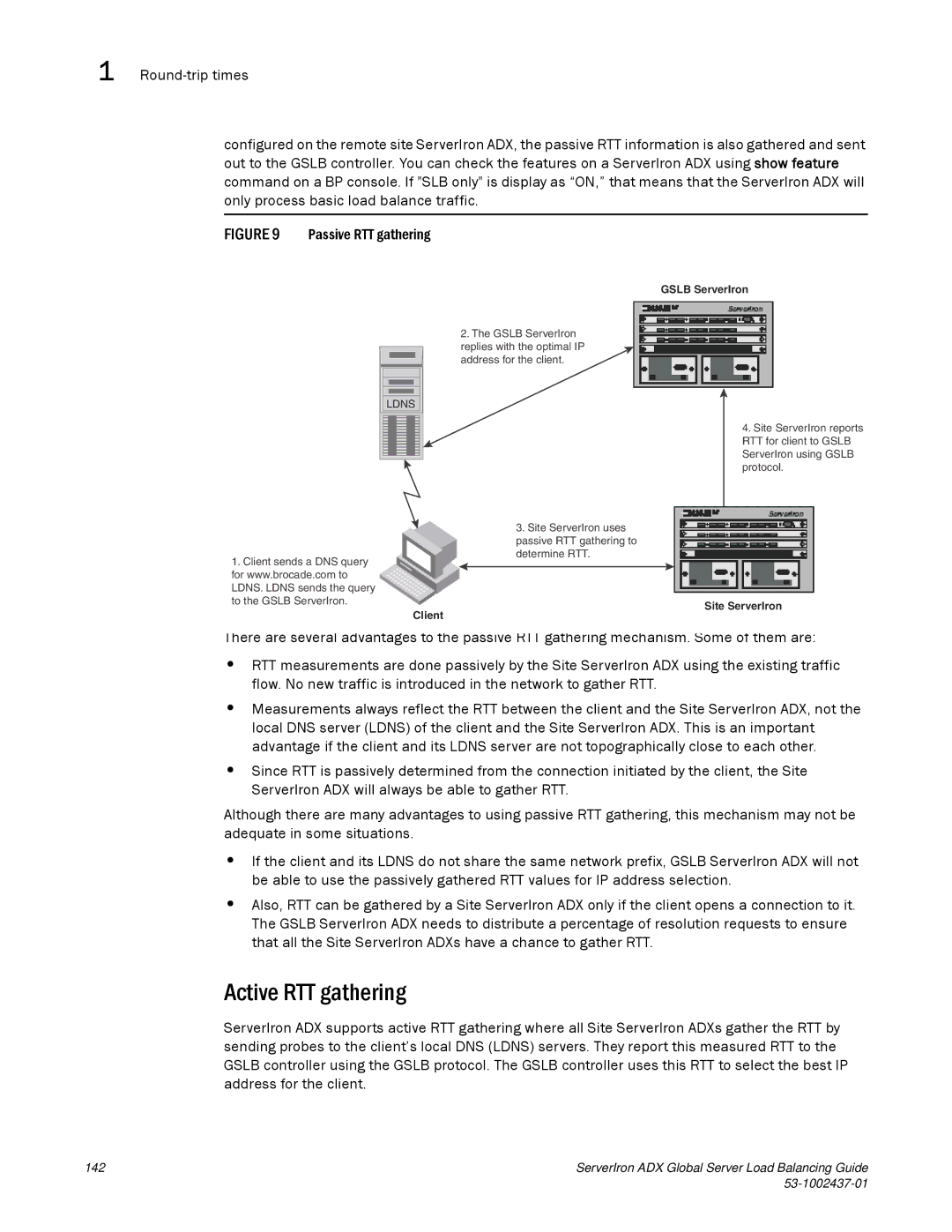
1
configured on the remote site ServerIron ADX, the passive RTT information is also gathered and sent out to the GSLB controller. You can check the features on a ServerIron ADX using show feature command on a BP console. If "SLB only" is display as “ON,” that means that the ServerIron ADX will only process basic load balance traffic.
FIGURE 9 Passive RTT gathering
GSLB ServerIron
2. The GSLB ServerIron replies with the optimal IP address for the client.
LDNS
1. Client sends a DNS query for www.brocade.com to LDNS. LDNS sends the query to the GSLB ServerIron.
Client
3.Site ServerIron uses
passive RTT gathering to determine RTT.
4.Site ServerIron reports RTT for client to GSLB ServerIron using GSLB protocol.
Site ServerIron
There are several advantages to the passive RTT gathering mechanism. Some of them are:
•RTT measurements are done passively by the Site ServerIron ADX using the existing traffic flow. No new traffic is introduced in the network to gather RTT.
•Measurements always reflect the RTT between the client and the Site ServerIron ADX, not the local DNS server (LDNS) of the client and the Site ServerIron ADX. This is an important advantage if the client and its LDNS server are not topographically close to each other.
•Since RTT is passively determined from the connection initiated by the client, the Site ServerIron ADX will always be able to gather RTT.
Although there are many advantages to using passive RTT gathering, this mechanism may not be adequate in some situations.
•If the client and its LDNS do not share the same network prefix, GSLB ServerIron ADX will not be able to use the passively gathered RTT values for IP address selection.
•Also, RTT can be gathered by a Site ServerIron ADX only if the client opens a connection to it. The GSLB ServerIron ADX needs to distribute a percentage of resolution requests to ensure that all the Site ServerIron ADXs have a chance to gather RTT.
Active RTT gathering
ServerIron ADX supports active RTT gathering where all Site ServerIron ADXs gather the RTT by sending probes to the client’s local DNS (LDNS) servers. They report this measured RTT to the GSLB controller using the GSLB protocol. The GSLB controller uses this RTT to select the best IP address for the client.
142 | ServerIron ADX Global Server Load Balancing Guide |
|
